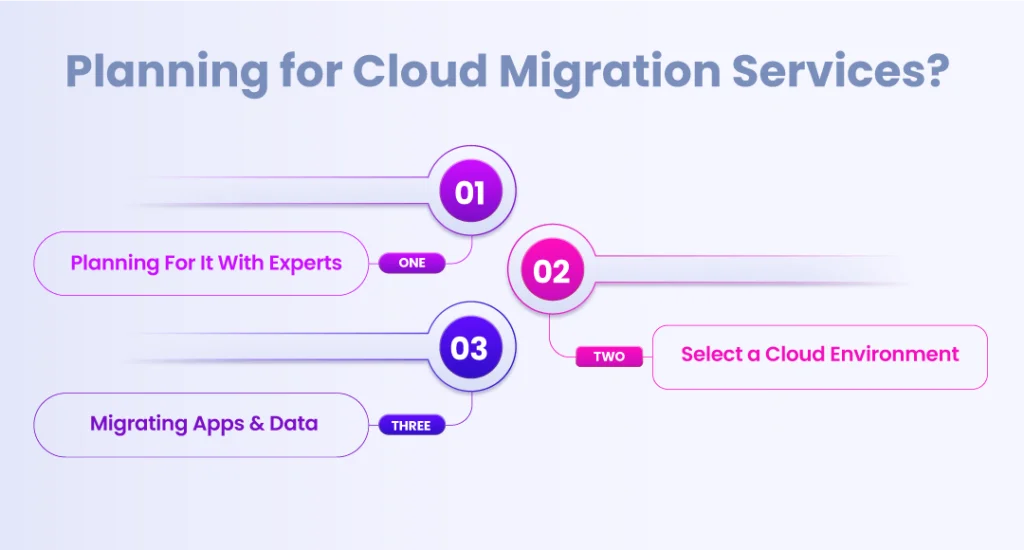Blog
Cloud Strategies: An Approach to Cloud Transformation and Migration
The process of transferring applications, files, software programs, or the entire IT infrastructure to the cloud to meet your business objectives is known as cloud transformation. The process of cloud transformation is not simple or straightforward. It entails creating new muscle memory and, most importantly, a new organizational culture that promotes and embraces new ways of working and learning in all aspects of an organization.
Stages of cloud transformation
Let’s check the four important stages of cloud transformation dervied by our SNDK Cloud Experts.
Application Transition–
Application transformation ensures that current systems can be migrated to the new cloud world.
Network Transformation
Moving networking components to the cloud is the aim of network transformation. On-premise data centers were (and still are) used to host traditional hub-and-spoke networks.
Security Transformation
Before, during, and after the migration period, security transformation makes sure that cloud migration procedures account for security threats.
Advantages of cloud transformation
Cloud transformation enables businesses to easily access cutting-edge technology, quickly adapt to changes, and better respond to consumer demands.
- Businesses may use cloud transformation to quickly consume emerging technology and services and adapt them to market conditions.
- Cloud transformation fosters a learning culture that accepts failure, allowing workers to be more expressive and imaginative in their attempts to try new ideas, test new items, and learn from their mistakes.
- Cloud transformation enables businesses to precisely evaluate their investments against key value chains, allowing them to decide whether or not a specific investment is feasible and optimal in terms of their profit and loss.
What is cloud migration?
Cloud migration is the method of moving automated business operations to the cloud. Cloud migration is similar to a physical transfer, except it involves transferring data, software, and IT processes from one data centre to another, rather than packing and moving physical objects.
Process of cloud migration
Here is the detailed process of cloud migration services.
Planning your migration:
Before you begin, you should be clear about why you’re moving and which strategy would better serve your goals.
Selecting a cloud environment:
You can now determine what kind of cloud model you want to use now that you have the exposure you need to succeed. You may go for a public cloud, a hybrid cloud, or a private cloud.
Migrating your apps and data
If everything goes according to plan, the actual migration should be a breeze. Maintaining cloud security issues, such as adhering to security policies and preparing for data backup and recovery, is still essential.
Benefits of cloud migration
Remote access
The cloud environment enables companies to access data from anywhere in the world.
Cost friendly
Many cloud solution providers provide low-cost high-security data storage. In cloud computing, you can easily extend and shrink storage depending on your needs.
Flexibility
Cloud storage allows for fluctuating capacity and storage demands. It is simple to scale up the cloud resources as required.
Security
In cloud storage environments, security concerns such as hacking, data theft, unauthorized access, intrusions, and identity theft are kept hidden.
Challenges of cloud migration
Monetary expense
The cost of cloud migration is offset in the long run by improved performance, lower administrative costs, and simplified processes.
Adoption opposition
When it comes to migration success, people are often the most difficult factor to overcome. Cloud migration also entails a lot of transition and uncertainty, with new structures, processes, and sometimes even leadership.
A scarcity of skills
Despite the many advantages of cloud computing, the difficulty of migration deters many businesses. One of the most significant challenges is locating people with the necessary expertise to handle a successful migration.
What are cloud strategies?
A cloud strategy is a succinct view of the cloud’s place in the enterprise. It’s a living document that serves as a link between a high-level corporate strategy and a cloud adoption/migration strategy. A cloud strategy is distinct from a cloud transformation or adoption strategy.
Conclusion
The cloud market is growing, and it is bringing in new and creative technology. When it comes to long-term digital transformation, cloud computing is rapidly proving to be a key player in the ever-changing market environment. In today’s economy, where companies are intensely focused on solving financial issues, the cost advantages of cloud computing services have begun to gain acceptance. Connect with SNDK Corp Cloud experts for professional and secure cloud migration services in USA, UK and Australia. For more details, visit our website!
FAQs
With the same budget, a cloud provider provides more comprehensive security solutions than an on-premise system. There are several layers of cybersecurity, as well as several tools for achieving it.
There are a few options. Amazon Snowball is one such example. It’s an AWS data storage and transfers appliance with a size of up to 50 terabytes that you can order. It’s almost indestructible, self-contained, and tamper-proof.
A prospective cloud service provider must be thoroughly examined to ensure that it is competent, dependable, financially sound, and has a positive industry reputation.

